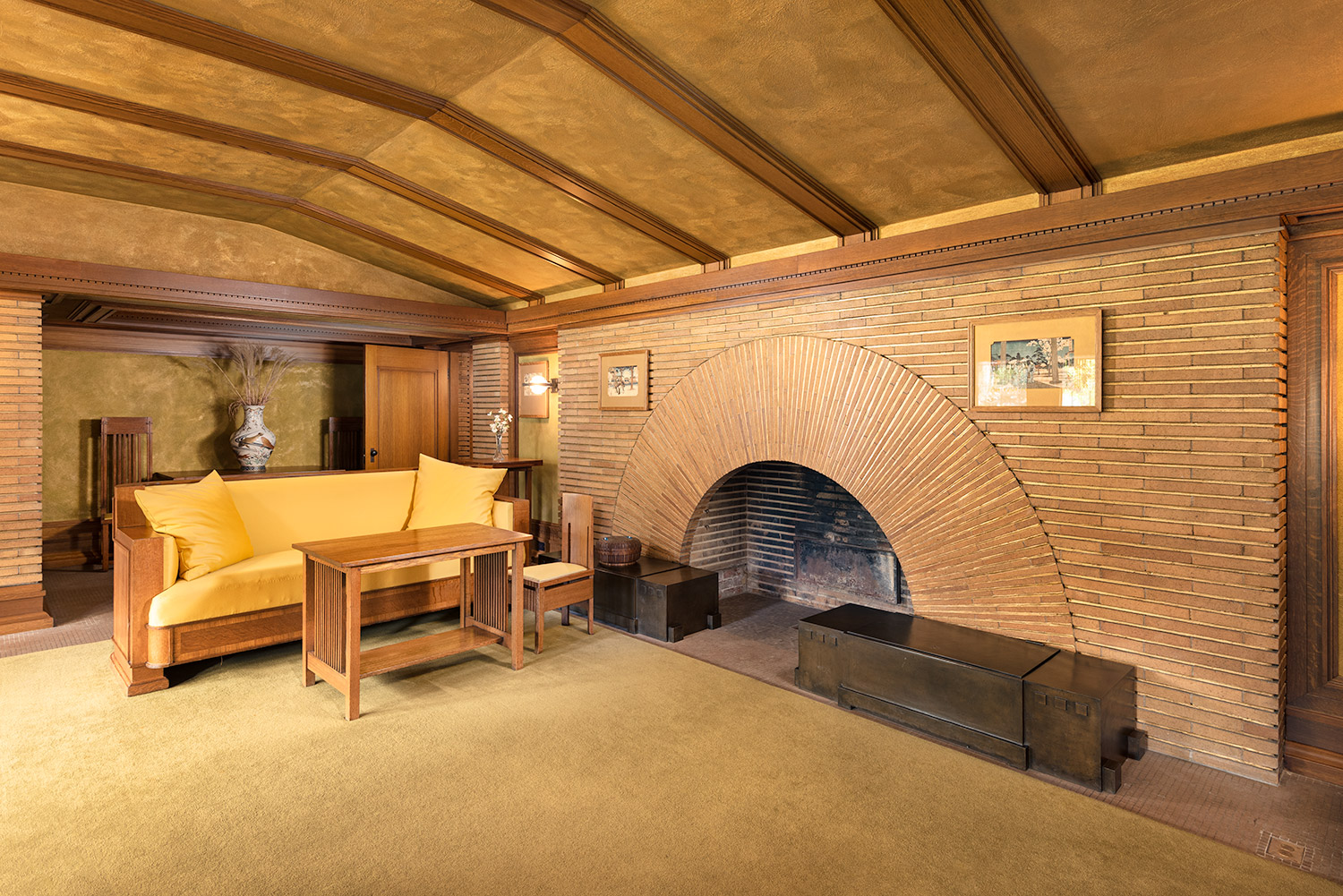Today’s worldwide interest in sustainable energy and architectural principles was foreshadowed by Wright’s life-long appreciation for nature. Wright frequently arrived at sustainable solutions that seem remarkably prescient today. Such innovations as nature-based site planning, interior day lighting, radiant and passive solar heating, the use of indigenous materials, natural evaporative air cooling, interior plant-scaping, lumber-saving “frameless” construction, earth-sheltered construction, “sun traps” to illuminate basements, and interior and exterior water elements are just some of his many innovations. Frank Lloyd Wright was worried about sustainability long before the word became in vogue. Wright’s nature-based architecture is powerfully relevant to current sustainability concerns on both technological and symbolic levels.
The Martin House Restoration Corporation project has incorporated principles of energy conservation, smart growth and natural resource protection as central to its core values. Of the nearly $50 million that is being invested in the Martin House Complex and its associated visitor center, nearly $4 million have been dedicated to energy-efficient systems that have either already been or are currently being incorporated into the Complex. Included in this investment are HVAC systems utilizing geothermal well technology for the Martin House, the reconstructed pergola, conservatory and carriage house and the Eleanor & Wilson Greatbatch Visitor Center. In the midst of this urban campus, fifty 350’ deep “wells” and multiple geothermal heat pumps have been installed in support of this system. Energy efficient lighting systems with Lutron controls are being installed in the Martin House and its connected buildings. Modern insulation is part of the Complex’s newly constructed and renovated buildings. The visitor center was constructed with energy efficient triple pane glass and modern mechanical systems.









